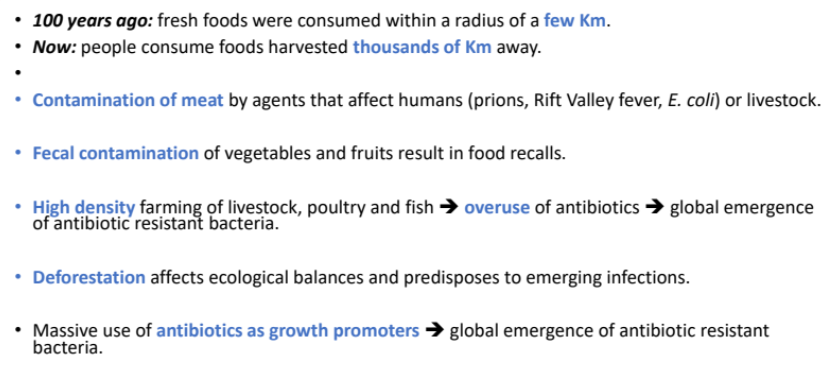DEN2027 emerging infections 2023 access
Introduction
Institution: Queen's University, Wellcome-Wolfson Institute for Experimental Medicine, Belfast
Presenter: Dr. Selinda Orr
Topic: Emerging Infectious Diseases
Learning Objectives
Define emerging and re-emerging infections.
Discuss general factors involved in these infections.
Provide examples of emerging pathogens.
Understand implications for clinical practice in dentistry.
WHO Definition of Emerging Infections
Emerging Infectious Disease:
Appeared for the first time affecting a population.
Rapidly increasing in new cases or spreading to new areas
infectious Diseases once controlled but re-emerging
Re-emerging Diseases:
Old diseases appearing in new clinical forms, possibly severe or fatal.
(e.g., chikungunya).
Factors Involved in Emerging and Re-emerging Infections
Microbial Transmission:
Carrying microorganisms from the mouth to anus.
Globalization:
Increased travel contributes to infection spread.
Agricultural Practices:
Fresh food trade practices may contribute to infections.
Food Technology:
Large-scale production and distribution practices contribute to risks.
Changing Hygiene Habits:
Societal attitudes towards hygiene impact disease spread.
Daycare Centers:
Mass use increases transmission potential in vulnerable populations.
Public Health:
Breakdown in health measures exacerbates risks.
Globalization of Travel and Trade.
Outbreaks Linked to Air Travel:
Air travel has been implicated in the spread of several diseases (HIV, SARS, COVID-19, etc.).\
Case Study: COVID-19
Overview:
Caused by the SARS-CoV-2 virus.
Transmission occurs through respiratory droplets from an infected person.
Incubation:
Symptoms generally appear 5–6 days post-infection but can take up to 14 days.
huge inpact and transmission
COVID-19 Symptoms and Treatments
Symptoms:
Ranges from mild to severe respiratory illness;
at-risk groups include older adults and those with pre-existing conditions. - cardiovascular disease, diabetes, chronic respiratory disease, cancer → more likely to develop serious illness
Vaccines and Treatments:
Several licensed vaccines and therapeutics available (e.g., Nirmatrelvir, Remdesivir).
Ebola Virus Disease
Transmission:
Spread from wild animals to humans, thenn human to human by direct contact with bodily fluid, blood
Fatality Rate:
Approximately 50%, AFRICA
Characteristics:
First identified in 1976; outbreaks influenced by rural and urban settings. → causes rapid spread
Symptoms and Treatments of Ebola
Incubation Period:
Ranges from 2-21 days, infectious during symptomatic phase.
Symptoms:
Include fever, fatigue, headache, vomiting, diarrhea
potentially severe complications like internal and extenal bleeding.
Treatment:
2 monoclonal antibodies and vaccines. (immazeb,ebanga)
Agricultural Practices Overview
Food-borne Diseases
Statistics:
fall ill annually from contaminated food
unsafe food
Common Pathogens:
Include Salmonella - egg, poultry
, Campylobacter - raw milk,
E. coli - unpasteurized milk, undercooked meat
Zoonosis
Definition:
Diseases that originate in animals and can infect humans; 60% of human infectious diseases, 75% of emerging diseases are zoonotic.
Species Jumping:
Organisms can establish human cycles independent of animal reservoirs.
Factors Contributing to Zoonosis Emergence - not important
Climate Change:
Alters habitats and disease vector dynamics.
Urbanization:
High density in cities promotes disease spread.
Biodiversity Loss:
Reduces ecological balances; increases risk of novel pathogen transfer.
Intensive Livestock Farming:
Poor practices lead to disease transmission to humans.
Pollution:
Environmental contamination encourages microbial evolution.
Bushmeat treading
Exhaustice agriculture practice
Deforestation and habitat fragmentation
Zika Virus Disease
Characteristics:
Flavivirus related to Dengue登革熱; transmitted primarily by mosquitoes
or mother to fetus, sexual contact, transfusion of blood
incubation period - 3 to 14 days .
Symptoms:
Often asymptomatic; can cause flu-like symptoms and serious conditions like Guillain-Barré syndrome and microcephaly.
Spread:
Rapidly propagating in the Americas; no preventive vaccine available.
Legionellosis
lengionella, airborne respiratory pathogen
transmit by inhalation of aerosol of contaminated water droplets
serious in community homes, hospital
treatment exist, but no vaccine
social attitude and measles
fear about false assoiation of mmr and autism → reduce vaccine rate
Conclusion: Challenges in 21st Century Health
Key Issues:
Emerging drug-resistant bacteria, and re-emerging diseases complicate patient care.
infectious disease due to chronic conditions
Pathogen - see ppt
emerging infections and dentisty
education - expain the herd immunity concept
oral related infections (HPV)
impact of oral heath in general heath
asses the infectious impact of dental practices
Dental practice - high risk environment
be aware of emerging infections
be aware of incubation period
be aware of patinet travel history
delay elective treatment if pateint is from affected area in contact until incubation period passed
full protective equipment
